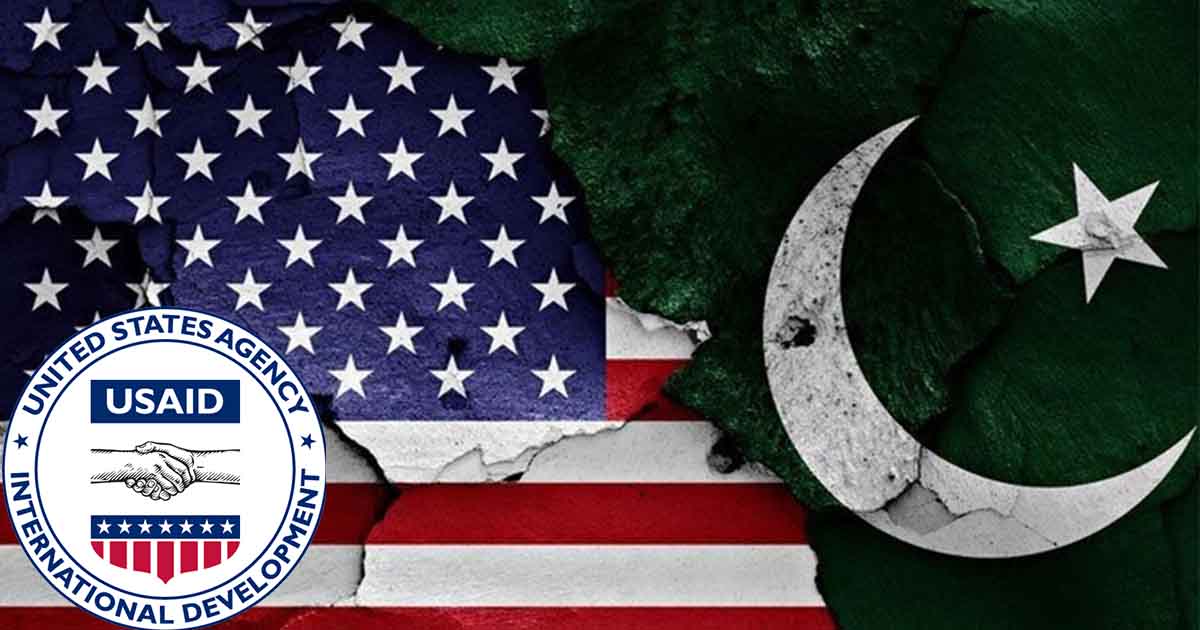Since 1947, Pakistan’s relationship with the US has followed a tortuous and unpredictable route. The relationship had all along been a transactional one -focusing on the immediate goals dictated by how each side perceived the ground realities during a particular period of time. Since the beginning of the strategic relationship, there had been a marked variance between the objectives of the two countries due to which economic and military assistance was provided to Pakistan for one set of reasons and received for another.
Pakistan needed US assistance to achieve economic self-reliance and offset Indian military superiority whereas the United States provided aid on the condition that Pakistan entered the US-sponsored military alliances in recognition of the communist danger, and would be prepared to be a part of the worldwide encirclement of the Soviet Union and China. Contrary to the popular perception generated by the US and its anti-army lobbies in Pakistan, the economic segment of the US aid had always been larger than the military component. As a sample, the breakdown of the US assistance between 1957 and 1964is given below
Military and economic aid was stopped in 1965

What was the price Pakistan had to pay for US assistance? In return for the fruition of the US strategic objectives in the Eurasian landmass, Pakistan was made to endanger its existence. On May 1, 1960, a U-2 spy plane piloted by Francis Gary Powers was brought down near Sverdlovsk, in the Soviet Republic of Kazakhstan. It transpired that Gary Powers had taken off from a secret US airbase at Badaber, near Peshawar. Premier Khrushchev of the Soviet Union threatened Pakistan with nuclear retaliation. He said that the Soviet Union had drawn a red circle around Peshawar.
Read more: Healthy & competitive thinking: Canada ties coronavirus aid to climate goals
In December 1979, the Soviet Union invaded Afghanistan. As a result of the invasion, refugees had started pouring into Pakistan, further aggravating its already precarious security and economic situation. This was happening when the Americans were still waiting on the sidelines for the events to evolve further. In the absence of support from the United States, ISI produced a bold plan which committed Pakistan to the military option without initially provoking the Soviets into a direct confrontation. For more than one year after the Soviet invasion, Pakistan Army had been fighting the Soviets alone.
In the waning years of the Soviet occupation, ISI, prompted by the CIA, launched operations in the Soviet Union proper. Panicked by the ISI operations, the CIA country head in Pakistan told his ISI counterpart “please don’t start the Third World War”. This was how Pakistan endangered its sovereignty in return for US aid.
Over the years, the pattern of US assistance to Pakistan had remained the same. Since 1954, when the US assistance to Pakistan was institutionalized, the US had cut off its aid thrice under various excuses; 1965 (Indo- Pak war), 1986 (Pressler Amendment), and1998 (in the wake of nuclear explosions). At present, Pakistan is not receiving any military aid from the US. During the culminating years of the US invasion of Afghanistan, even the so-called Coalition Support Funds were stopped (a misnomer for the transit charges and payment for the damages to Pakistan’s fragile infrastructure).
Read more: Where the US aid package for Palestine went? Envoy rejects US boastings
During the US occupation of Afghanistan, America had made its future aid to Pakistan contingent upon the following conditions:-
- Whereas the TPP safe havens in Afghanistan are nothing but delusions, Pakistan should stop supporting the Haqqani Group- An allegation Pakistan vehemently rejected.
- Pakistan’s concerns about India are its “Strategic Anxieties”; it should accept India as a major regional player in South Asia.
- Pakistan should stop talking about maintaining a military balance with India. Military balance is a concept coined by the Prussian General Staff under the influence of Karl von Clausewitz.
During “Operation Enduring Freedom “, the US civil and military aid to Pakistan had peaked in 2011, at $3.5 billion. In 2016, it was down to $ 1 billion- sans military aid and CSF. In 2017, it amounted to less than $1 billion. Thus, between 1956 and 2017, US aid to Pakistan, per year, had hovered between $1-3 billion. If we consider the peak amount ($ 3 billion) (Wren Elhai), Pakistani expatriates from the world over send around 7 times the amount Pakistan got per year in US aid. Instead of begging the US as our rulers do, Pakistan will be better off earning these $ 3 billion by improving its balance of payments.
Read more: US Aid to Pakistan reduced by $440 Million
Pakistan’s military spending as a percentage of its national budget
It is generally propagated in the Pakistani press that Pakistan’s armed forces gobble up a major chunk of the federal budget. Depending upon the hostility of the media person, this allocation varies between 40 and 80 percent of the budget. Given below is the table, along with the link to the World Bank graph that gives the year-wise expenditure on all the three services -Army, Navy, and Airforce – as a percentage of the Federal budget.

Saleem Akhtar Malik is a Pakistan Army veteran who writes on national and international affairs, defense, military history, and military technology. He Tweets at @saleemakhtar53. The views expressed in this article are the author’s own and do not necessarily reflect the editorial policy of Global Village Space.














